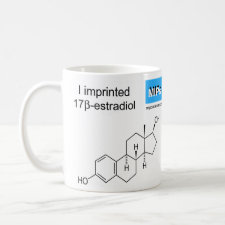
Authors: Latif U, Qian JJ, Can S, Dickert FL
Article Title: Biomimetic Receptors for Bioanalyte Detection by Quartz Crystal Microbalances - From Molecules to Cells.
Publication date: 2014
Journal: Sensors
Volume: 14
Issue: (12)
Page numbers: 23419-23438.
DOI: 10.3390/s141223419
Alternative URL: http://www.mdpi.com/1424-8220/14/12/23419
Abstract: A universal label-free detection of bioanalytes can be performed with biomimetic quartz crystal microbalance (QCM) coatings prepared by imprinting strategies. Bulk imprinting was used to detect the endocrine disrupting chemicals (EDCs) known as estradiols. The estrogen 17β-estradiol is one of the most potent EDCs, even at very low concentrations. A highly sensitive, selective and robust QCM sensor was fabricated for real time monitoring of 17β-estradiol in water samples by using molecular imprinted polyurethane. Optimization of porogen (pyrene) and cross-linker (phloroglucinol) levels leads to improved sensitivity, selectivity and response time of the estradiol sensor. Surface imprinting of polyurethane as sensor coating also allowed us to generate interaction sites for the selective recognition of bacteria, even in a very complex mixture of interfering compounds, while they were growing from their spores in nutrient solution. A double molecular imprinting approach was followed to transfer the geometrical features of natural bacteria onto the synthetic polymer to generate biomimetic bacteria. The use of biomimetic bacteria as template makes it possible to prepare multiple sensor coatings with similar sensitivity and selectivity. Thus, cell typing, e.g., differentiation of bacteria strains, bacteria growth profile and extent of their nutrition, can be monitored by biomimetic mass sensors. Obviously, this leads to controlled cell growth in bioreactors.
Template and target information: Review - MIP-QCM sensors for molecules and cells
Author keywords: estradiol, endocrine disrupting chemicals (EDCs), quartz crystal microbalance (QCM), molecular imprinted polymers (MIPs), Escherichia coli (E.coli), Bacillus subtilis (B.subtilis)



Join the Society for Molecular Imprinting

New items RSS feed
Sign-up for e-mail updates:
Choose between receiving an occasional newsletter or more frequent e-mail alerts.
Click here to go to the sign-up page.
Is your name elemental or peptidic? Enter your name and find out by clicking either of the buttons below!
Other products you may like:
 MIPdatabase
MIPdatabase









